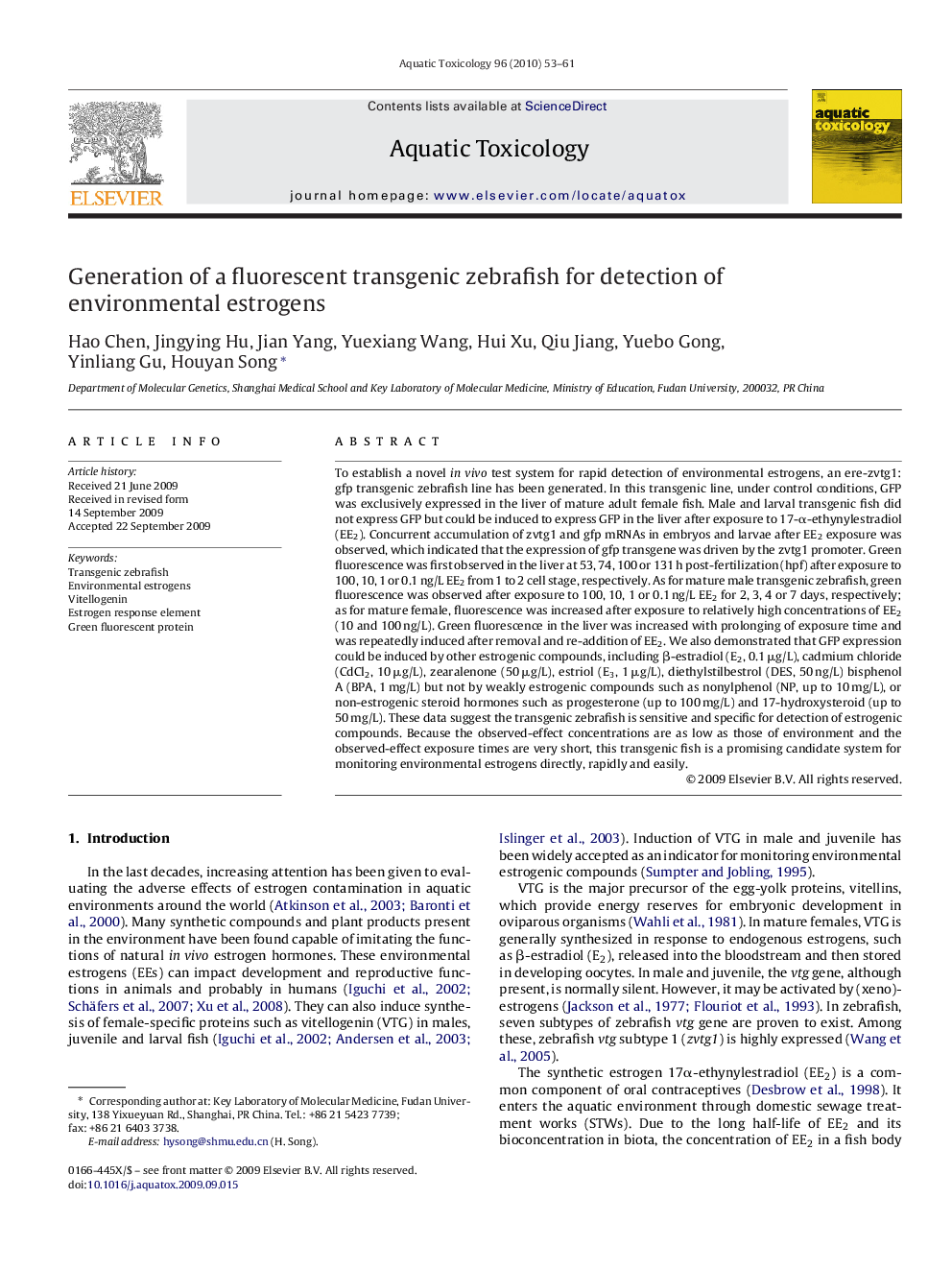| کد مقاله | کد نشریه | سال انتشار | مقاله انگلیسی | نسخه تمام متن |
|---|---|---|---|---|
| 4530318 | 1324696 | 2010 | 9 صفحه PDF | دانلود رایگان |

To establish a novel in vivo test system for rapid detection of environmental estrogens, an ere-zvtg1: gfp transgenic zebrafish line has been generated. In this transgenic line, under control conditions, GFP was exclusively expressed in the liver of mature adult female fish. Male and larval transgenic fish did not express GFP but could be induced to express GFP in the liver after exposure to 17-α-ethynylestradiol (EE2). Concurrent accumulation of zvtg1 and gfp mRNAs in embryos and larvae after EE2 exposure was observed, which indicated that the expression of gfp transgene was driven by the zvtg1 promoter. Green fluorescence was first observed in the liver at 53, 74, 100 or 131 h post-fertilization (hpf) after exposure to 100, 10, 1 or 0.1 ng/L EE2 from 1 to 2 cell stage, respectively. As for mature male transgenic zebrafish, green fluorescence was observed after exposure to 100, 10, 1 or 0.1 ng/L EE2 for 2, 3, 4 or 7 days, respectively; as for mature female, fluorescence was increased after exposure to relatively high concentrations of EE2 (10 and 100 ng/L). Green fluorescence in the liver was increased with prolonging of exposure time and was repeatedly induced after removal and re-addition of EE2. We also demonstrated that GFP expression could be induced by other estrogenic compounds, including β-estradiol (E2, 0.1 μg/L), cadmium chloride (CdCl2, 10 μg/L), zearalenone (50 μg/L), estriol (E3, 1 μg/L), diethylstilbestrol (DES, 50 ng/L) bisphenol A (BPA, 1 mg/L) but not by weakly estrogenic compounds such as nonylphenol (NP, up to 10 mg/L), or non-estrogenic steroid hormones such as progesterone (up to 100 mg/L) and 17-hydroxysteroid (up to 50 mg/L). These data suggest the transgenic zebrafish is sensitive and specific for detection of estrogenic compounds. Because the observed-effect concentrations are as low as those of environment and the observed-effect exposure times are very short, this transgenic fish is a promising candidate system for monitoring environmental estrogens directly, rapidly and easily.
Journal: Aquatic Toxicology - Volume 96, Issue 1, 21 January 2010, Pages 53–61